#Bim construction documentation
Explore tagged Tumblr posts
Text
Outsourcing Construction Documentation for Architects and Contractors

Architects and contractors leverage the power of construction documentations. It is evident to outsource for accurate and efficient outcomes for pre and post construction stages. Read in detail how outsourcing is beneficial for architects and other AEC professionals.
For more details
#construction documentation#architectural construction documentation#construction drawing plans#architectural construction drawings#construction documentation services#bim construction documentation#construction document set
2 notes
·
View notes
Text
AEODC offers specialized BIM Construction Documentation Services for different building projects and is well known for its accuracy and attention to detail. They stand out because of their teamwork style and dedication to producing trustworthy BIM models. Visit www.aeodc.com to know more.
0 notes
Text
3D Building Scanning for Accurate As-Built Plans in the USA

The Architecture, Engineering, and Construction (AEC) industry in the United States is entering a new era of precision and efficiency. One technology leading this shift is 3D building scanning, a digital solution revolutionizing how professionals plan, design, and manage building projects.
What Is 3D Building Scanning?
3D building scanning uses advanced LiDAR or photogrammetry to capture precise spatial data of an entire structure. It generates a detailed point cloud, which is then converted into as-built drawings, 2D floor plans, or BIM models using software like Autodesk Revit, AutoCAD, and Navisworks.
This technology provides highly accurate, real-world geometry that supports smarter decisions throughout the project lifecycle—from preconstruction to facility management.
Why AEC Firms in the USA Are Adopting 3D Building Scanning
✅ 1. Generate Accurate As-Built Documentation
Outdated blueprints and site conditions are a common challenge, especially in renovations. 3D scanning enables contractors and architects to work with true-to-site digital data—reducing design errors and costly rework.
✅ 2. Accelerate Commercial Renovation Planning
Whether it's a retail remodel in Los Angeles or a warehouse retrofit in Dallas, scanning provides a complete building survey in hours instead of days. This fast, non-invasive method is ideal for occupied spaces or tight project schedules.
✅ 3. Seamless Integration with BIM Workflows
Point cloud data integrates directly into Revit for scan-to-BIM modeling, improving MEP coordination, structural planning, and clash detection—key for high-rise builds, healthcare facilities, and industrial environments.
✅ 4. Enhance Facility Management & Long-Term Operations
3D building scans produce digital twins that support asset management, space planning, and system upgrades for schools, hospitals, government buildings, and more.
Where 3D Scanning Adds Value
Commercial Real Estate Development Perfect for feasibility studies, tenant fit-outs, and property marketing.
Historical Building Documentation Protect and preserve architectural details with laser-precise digital archives.
Healthcare, Education, and Public Sector Projects Ensure safety and compliance with minimal disruption to ongoing operations.
Federal and Government Infrastructure Meet BIM mandates and improve accountability with accurate project data.
Technologies Behind 3D Building Scanning
The USA’s top scanning providers use tools like:
Leica BLK360 and RTC360
FARO Focus Premium
Trimble X7
Drone-based LiDAR and photogrammetry
SLAM-based handheld scanners
Each device is chosen based on site complexity, interior/exterior scope, and level of detail required.
Choosing a 3D Scanning Partner in the USA
Here’s what to look for when selecting a scanning provider:
Proven experience in AEC-specific workflows
Capability to deliver BIM-ready Revit models
File format support (E57, RCP, DWG, IFC)
Fast turnaround for time-sensitive projects
Fully trained field teams with safety certifications
Final Thoughts
Whether you're managing a multi-phase retrofit or preparing for a LEED-certified construction project, 3D building scanning provides the accuracy, speed, and digital insight today’s AEC teams demand.
From as-built surveys for architects to clash detection models for contractors, scanning empowers your project team to build smarter and avoid surprises.
📞 Need Help with 3D Building Scanning for As-Built Documentation or Scan to BIM Modeling? Talk to experienced professionals who understand the real-world challenges of construction, renovation, and facility management. Get a free quote or schedule a pilot project for 3D laser scanning services in the USA, including point cloud to Revit conversion, as-built floor plans, and scan-to-BIM for commercial buildings.
#3d laser scanning#laser scanning#architecture#building design#building information modeling#gis#3d scanning#urban architecture#as built documentation#scant o bim#clash detection#construction
0 notes
Text
#construction#building#bim services company#BMSI#construction documentation#engineering#aecindustry#hvac services#vdc#architecture#mechanical
0 notes
Text
Comprehensive Training in Building Design with Revit Architecture
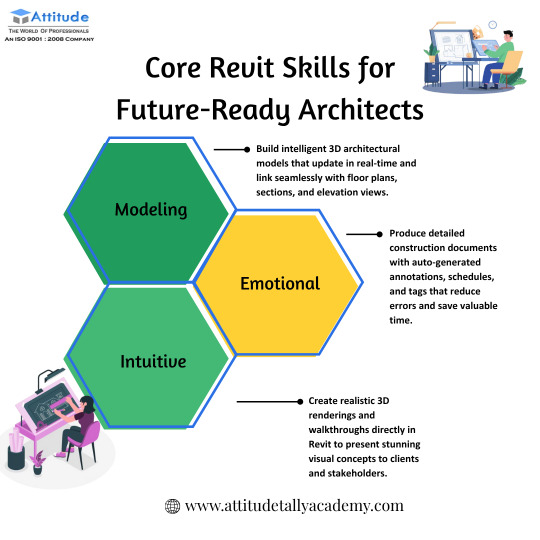
Learn how to design, plan, and document building projects using Revit Architecture. Focus on Building Information Modeling (BIM), including parametric components, workflows, and collaborative design tools.
Visit Attitude Academy Yamuna Vihar :- https://maps.app.goo.gl/gw9oKCnXDXjcz4hF7 Uttam Nagar :- https://maps.app.goo.gl/iZoQT5zE3MYEyRmQ7 Yamuna Vihar +91 9654382235 Uttam Nagar +91 9205122267 Visit Website: https://www.attitudetallyacademy.com Email: [email protected]
#Revit Architecture#BIM#building modeling#architectural drafting#construction documentation#parametric design#architectural design software#Revit workflow
0 notes
Text
One critical aspect of this transformation is the role that construction documentation plays within the BIM process. Construction documentation refers to all the necessary drawings, plans, and details that guide a construction project from start to finish. In this article, we’ll explore why construction documentation is crucial in the BIM process and how it contributes to successful project delivery.
0 notes
Text
#construction#bim technology#bim#building design#building information modeling#bim360#document management
0 notes
Text
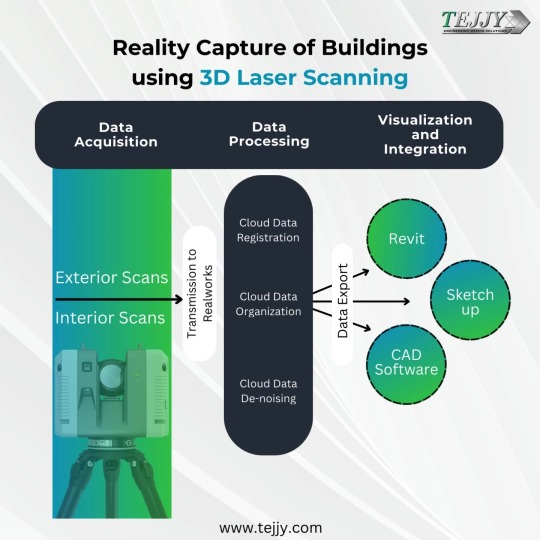
Reality capture, also known as 3D laser scanning, is a powerful technology used to create highly detailed and accurate digital representations of buildings.
Applications of Reality Capture in Buildings:
Construction: Creates as-built models for verification, clash detection (identifying conflicts between building elements), and progress monitoring.
Renovations: Provides accurate documentation of existing conditions before renovation work begins.
Facility Management: Enables efficient space planning, maintenance scheduling, and asset tracking.
Historic Preservation: Creates digital archives of historical buildings for preservation purposes.
Overall, reality capture with 3D laser scanning offers a faster, more accurate, and more efficient way to capture and document building data for various applications.
0 notes
Text
The Importance of As-Built Drawings in Construction Projects
The Importance of As-Built Drawings in Construction Projects
You may not have as-built drawings at the top of your list of priorities, but it's time to reconsider. Because they record the real construction of a building or infrastructure project rather than just the original plan, these drawings are essential to construction undertakings.
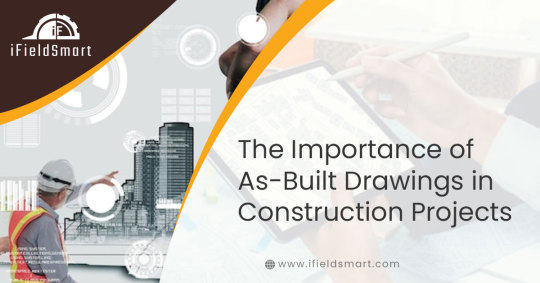
Unexpected circumstances or changes may arise during construction, causing adjustments to the initial plan. Consequently, in order to ensure that the project is constructed in accordance with the planned design, as-built drawings are essential resources for contractors, architects, engineers, and other stakeholders. When it comes to future maintenance, repairs, renovations, or other changes, as-built drawings are a crucial documentation of the project.
With a 9% share in the Australian economy, the building sector is a major contributor.
What are As Built documentation?
As Built documentation makes sure that the finished product is painstakingly photographed and documented by offering a thorough, post-construction image of a building. As-Builts, as opposed to original construction plans, show the building as it is at project completion, including any modifications made during construction.
What are as-built drawings?
As-built drawings are the finished drawings that show how a building or infrastructure project was actually constructed as opposed to how it was originally designed. These drawings, while seemingly unimportant, actually record the precise placement, measurements, and specifications of each project component as it was constructed.
Unexpected circumstances or adjustments may need alterations to the original design during construction. Consequently, in order to guarantee that the project is built in accordance with the planned design and that any modifications made during construction are appropriately reflected in the finished product, contractors, architects, engineers, and other stakeholders rely heavily on the as-built drawings.
You can determine the original design and specs by comparing the as-built drawings to them.
As-Built Drawing Software for the Field
As Built Drawings Software makes it simple to keep track of your drawings in the field and allows you to share marked-up drawings with stakeholders, such owners and project managers, at any time. Users have the ability to export and archive particular project locations, indicate field changes, and draw red lines.
Accurate as-builts indicate the progress required to receive payment for contracts whose pay schedules are contingent on completion, along with any necessary revisions to the plan sheets.
The Purpose of As Built Drawing
As-built drawings offer a precise documentation of a project's completed construction. They offer a shared point of reference that all parties may utilise to comprehend how the project is being built and to make any required adjustments or fixes.
1. Record Design Changes
As-built drawings should always be compared to the original design as part of the building process. You can next check to see if the finished product adheres to the original design and requirements and make sure that any modifications made during construction are appropriately reflected.
Furthermore, drawing comparisons between the as built drawing and the original design might shed light on any problems or difficulties encountered during construction and serve as guidance for future projects.
2. Provide Accurate Data for Repairs & Maintenance
As-built drawings are a vital resource for upcoming upkeep, fixes, upgrades, and equipment replacement. They include details regarding a construction project's finished condition, which facilitates future work and guarantees that everything works as it should. Construction projects can be successfully finished by depending on excellent documentation produced by knowledgeable experts.
3. Prevent Mistakes & Rework
By guaranteeing that the final construction of a building or infrastructure project is executed in accordance with the specified design and requirements, these drawings can avoid errors and costly rework. As-built drawings offer a precise documentation of the project's completed construction, which can be compared to the original design to find any differences. Early detection of these discrepancies allows for the making of repairs before they become more expensive to fix.
4. Comply with Regulations & Standards
As-built drawings are essential for guaranteeing that building projects, such as those governed by the National building Code, comply with all applicable laws and regulations. You may make sure that all relevant local construction ordinances, zoning laws, safety standards, and other criteria are satisfied by closely examining the as-built drawings.
By identifying and correcting any regulatory deviations, this paperwork can assist guarantee that the finished product is safe and fully compliant.
Types of As-Built Drawings
Depending on the particular needs of the project and the interests of the parties involved, a construction project may generate a variety of as-built drawings.
Architectural -
Architectural as-built drawings are a collection of drawings that show how a building or other structure was completed. Imagine it as a map or blueprint of the completed structure, complete with all the construction details.
These drawings, which are made once construction is over, provide precise measurements, placements, and descriptions of every element of the building, including the floors, ceilings, walls, doors, and windows.
Architectural as-built drawings are crucial because they offer an enduring documentation of the completed structure and can be consulted, maintained, or altered in the future.
Structural -
A set of drawings known as structural as-built drawings serves as a structural record of a building or other structure's final construction. The columns, beams, trusses, walls, and foundations of the building, as well as the supporting structures, are all depicted in detail in these drawings.
The structural "bones" of a building, or the elements that support and stabilise the walls, floors, and roof, are what you may refer to as the structural as-built drawings.
Because they offer a permanent record of the building's construction from a structural standpoint, structural as-built drawings are significant.
Electrical -
A set of drawings known as electrical as-built drawings serves as documentation for a building or other structure's final electrical installation. The arrangement, positioning, and connections of every electrical part of the building, including outlets, light fixtures, switches, and panels, are depicted in these drawings.
Electrical as-built drawings might be compared to a building's map or plan that shows the electrical components and wiring. They demonstrate how the building's power works and how each electrical part is related.
Because they offer a permanent record of the construction of the building's electrical system, electrical as-built drawings are significant.
Mechanical -
A collection of drawings known as mechanical as-built drawings records the building or structure's final mechanical construction. All of the mechanical elements of the building, including the fire safety, plumbing, and HVAC (heating, ventilation, and air conditioning) systems, are depicted in these drawings along with their locations and connections.
Mechanical as-built drawings might be compared to a building's internal systems layout. They demonstrate how the building's mechanical systems are set up, integrated, and function as a whole to give its occupants a secure and comfortable environment.
Because they offer a permanent record of the construction methods used to create the building's mechanical systems, mechanical as-built drawings are significant. This document may be maintained, modified, or referred to in the future.
Visit : www.ifieldsmart.com/as-built-drawings
#As built documentation#As-built documentation#as built drawings#As built drawing#As built drawings#As Built Drawings Software#As-Built Drawings#Architect#CIvil#Construction#BIM
0 notes
Text
The Integral Impact of MEPFP Design Documentation in CAD & BIM on Contemporary Educational Institutions
Top Architectural CAD and BIM documentation services like The AEC Associates perfectly understand the important role played by MEPFP (Mechanical, Electrical, Plumbing, and Fire Protection) design documentation in shaping modern learning environments in contemporary educational institutions. Architectural CAD and BIM design documentation assists designers in coming up with efficient and creative educational facilities through the design of various systems- from mechanical systems ensuring air quality to fire protection strategies for safety and electrical systems supporting technological integration to plumbing and sanitation for health and hygiene.
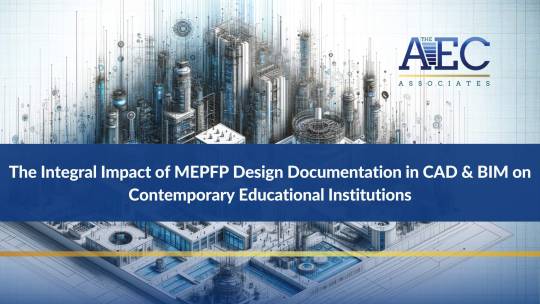
The importance of MEPFP in educational facilities:
MEPFP design documentation plays a pivotal role in creating educational spaces that are not only conducive to learning but also align with contemporary standards and sustainability goals. By integrating BIM Modeling Services, educational institutes can optimize their facilities for functionality, energy efficiency, and overall performance. Let’s have a look at how different aspects may help achieve this objective.
Mechanical systems for optimal air quality and temperature control
While designing mechanical systems, the emphasis is on creating an environment conducive to learning. HVAC (Heating, Ventilation, and Air-conditioning) systems are meticulously designed to provide optimal air quality and temperature control. BIM Modeling Services enable the visualization of these systems, facilitating precise planning and execution.
Electrical systems for advanced technological integration
In the digital age, technological integration is a key consideration in educational spaces. MEPFP design documentation ensures that electrical systems are not only robust but also adaptable to the evolving technological landscape. These systems, from smart classrooms to advanced audio-visual setups, are designed with safety, adaptability, and future-proofing in mind.
Plumbing and sanitation for health and hygiene
The health and well-being of students and staff are of paramount importance. MEPFP design documentation addresses plumbing and sanitation systems with a focus on promoting health and hygiene. From water efficiency to fixtures to sanitation facilities that adhere to the highest standards, these systems contribute to the overall well-being of the educational community.
Fire protection: Ensuring safety in educational spaces
Safety is a top priority in educational institutions, and fire protection is a critical component. CAD documentation helps accurately design an efficient layout and position of fixtures to ensure the safety of the users. MEPFP design documentation incorporates robust fire protection strategies that comply with regulations and codes. Architectural CAD and BIM services aid in simulating fire scenarios, allowing for identifying and rectifying potential vulnerabilities.
Advancements in technologies thus present a positive outlook on the evolution of MEPFP systems in the future that promises educational institutions efficient, adaptable, and vibrant learning environments.
MEPFP systems must adapt to the ever-evolving educational needs and requirements and technological advancements. The future outlook involves the integration of emerging technologies, such as the Internet of Things (IoT) for smart building management, which is ably facilitated by Architectural CAD and BIM Design Documentation through providing efficient MEPFP systems to enhance the efficiency and sustainability of educational facilities.
#cad#bim#bimmodeling#bimmodelingservices#bimservices#architecturebimservices#construction documentation services#architectural cad drafting#design documentation
0 notes
Text
Construction Documentation for Accuracy & Collaboration

Construction documentation is one significant process for achieving accurate and collaborative workflow among AEC professionals. BIM construction management can improve and streamline the work approach. 🏗
➡ Read in detail how construction documentation can help.
#construction documentation#architectural construction documentation#construction drawing plans#architectural construction drawings#construction documentation services#bim construction documentation#construction document set
4 notes
·
View notes
Text

BIM is a collaborative process that uses intelligent 3D models to create and manage information for a built asset throughout its lifecycle. It helps to improve communication and coordination between project stakeholders, leading to better decision-making, reduced costs, and increased efficiency.
BIM 3D models are not just digital representations of the physical building; they also contain information about the building's materials, systems, and components. This information can be used to perform a variety of tasks, such as BIM coordination and clash detection, quantity takeoff, and scheduling.
Explore the possibilities of BIM with TopBIM and unlock a world of improved efficiency, collaboration, and decision-making.
0 notes
Text
Exploring the Diverse Landscape of BIM Software in Construction: A Comprehensive Guide
Introduction: In the ever-evolving field of construction, Building Information Modeling (BIM) has emerged as a transformative technology that revolutionizes the way buildings are designed, constructed, and managed. BIM software plays a pivotal role in enhancing collaboration, improving efficiency, and minimizing errors throughout the construction process. This article delves into the various…
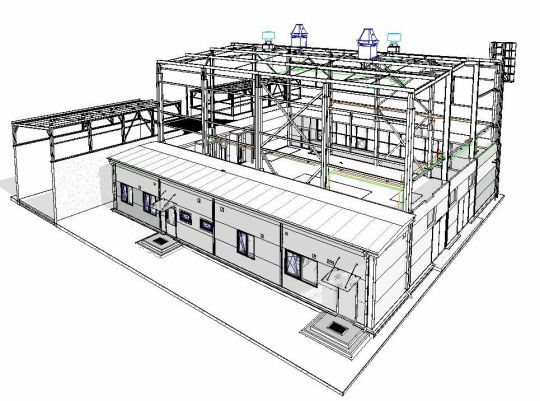
View On WordPress
#architectural design software#as-built documentation#BIM model accuracy#BIM software#Building Information Modeling#collaboration platforms#construction industry advancements#construction management software#construction project efficiency#Construction Technology#cost estimation tools#facility maintenance optimization#facility management solutions#laser scanning technology#LiDAR applications#MEP systems modeling#point cloud integration#project stakeholders collaboration#real-time coordination#structural engineering tools#sustainable building practices
0 notes
Text

#bim coordination services#laser scanning services#360 field documentation#architecture#construction
0 notes
Text
How Architectural Bim Services Streamline Building Design

Don’t you have any idea about how Architectural BIM Services USA made huge changes. Here you go. In this rapidly evolving architecture, engineering, and construction industry, there is a huge demand for promising work. Those who complete the project with precision, efficiency, and collaboration are always welcome.
#Architectural BIM Services USA#Bim Service Providers#Architectural Bim Services#Structural Bim Services#Mepf Bim Services#Infrastructure Landscape Mepf#4D Bim Software#5D Quantity Take-Off#Building Information Modelling 6D#7D Bim Asset Management Company#Point Cloud To Bim Conversion#Cad To Bim Modeling Services#Construction Documentation Checklist#Cobie Service India#Bim For Facility Management#Structural Precast Modelling#Revit Fabrication Service India#Bim Consulting Services India#Bim Implementation Service India#Bim Documentation Service#Bim Execution Planning Guide
0 notes
Text

NAVIGATING PROJECT MANAGEMENT IN THE AEC INDUSTRY
Navigating Project Management in the AEC industry involves a series of interconnected tasks that require effective planning, execution, monitoring, and control. By following best practices and leveraging project management methodologies such as APM, SCRUM, KANBAN, or the Traditional WATERFALL Project Management Methodology, the AEC professionals can successfully deliver complex projects while meeting stakeholder expectations and achieving project objectives.
As an architectural manager with a Master of Architecture degree and an architectural engineering degree from reputable institutes, having experience in project and design management for large-scale commercial facilities, multi-story offices, and high-rise administration buildings, I can provide the necessary artifacts to enhance project success, improve team collaboration, and effectively handle project complexities in the architecture, engineering, and construction (AEC) sector.
1. Set Clear Goals and Objectives:
Define project scope, including deliverables and constraints.
Establish SMART (Specific, Measurable, Achievable, Relevant, Time-bound) goals.
Align goals with stakeholder expectations and project requirements.
Obtain buy-in from key stakeholders on project objectives.
2. Develop a Comprehensive Project Plan:
Create a detailed work breakdown structure (WBS) to organize project tasks.
Define project milestones and dependencies.
Develop a project schedule with timelines and resource allocation.
Identify risks and develop a risk management plan.
Establish a budget and financial plan for the project.
3. Foster Effective Communication:
Establish communication channels and protocols for project team members.
Hold regular project meetings to discuss progress, issues, and updates.
Use clear and concise language in all communications.
Encourage open and transparent communication among team members.
Address communication barriers and conflicts promptly.
4. Embrace Technology and Communication:
Utilize project management software for task tracking and collaboration.
Implement communication tools such as emails, instant messaging, and video conferencing.
Leverage cloud-based platforms for document sharing and version control.
Provide training and support for team members on project management tools.
Stay updated on new technologies and tools to improve project efficiency.
5. Manage Change Effectively:
Establish a change control process to evaluate and approve changes to project scope.
Communicate changes to stakeholders and assess their impact on project objectives.
Update project documentation and plans to reflect approved changes.
Monitor changes to prevent scope creep and ensure project alignment with goals.
Evaluate the risks and benefits of proposed changes before implementation.
6. Foster Collaboration and Teamwork:
Encourage team members to share ideas, feedback, and best practices.
Foster a collaborative work environment that values diversity and inclusivity.
Promote team building activities and recognize team achievements.
Facilitate cross-functional collaboration and knowledge sharing.
Resolve conflicts and promote a positive team culture.
7. Continuously Monitor and Evaluate Progress:
Track project performance against key performance indicators (KPIs).
Conduct regular project reviews to assess progress and identify areas for improvement.
Monitor project risks and issues and take corrective actions as needed.
Evaluate project outcomes against initial goals and objectives.
Use lessons learned to make informed decisions and optimize project performance.
By focusing on these subtasks within each point, project managers can enhance project success, improve team collaboration, and effectively manage project complexities in the Architecture, Engineering, and Construction (AEC) industry.
Sonetra KETH (កេត សុនេត្រា) •Architectural Manager, Project Manager, BIM Director •建築師經理, 專案經理, BIM總監 •Giám đốc kiến trúc, Giám đốc dựán, Giám đốc BIM •RMIT University Vietnam + Institute of Technology of Cambodia
#Pinned#Avatar#sonetra-keth#Badge image.#Nov 1#2023#Sonetra KETH#Architectural Manager#Project Manager#BIM Director#Thought Leadership#Design Management#Project Management#BIM Management#建筑师经理、专案经理、BIM总监#Giám đốc Kiến Trúc#Giám đốc Dựán#Giám đốc BIM#<meta name=“google-adsense-account” content=“ca-pub-9430617320114361”>#Sonetra Keth#blueprint#Inspired Urban Planning#Urban Planning Framework#crossorigin=“anonymous”></script>#កេត សុនេត្រា#នេត្រា#NETRA#netra#n8tra#N8TRA
5 notes
·
View notes